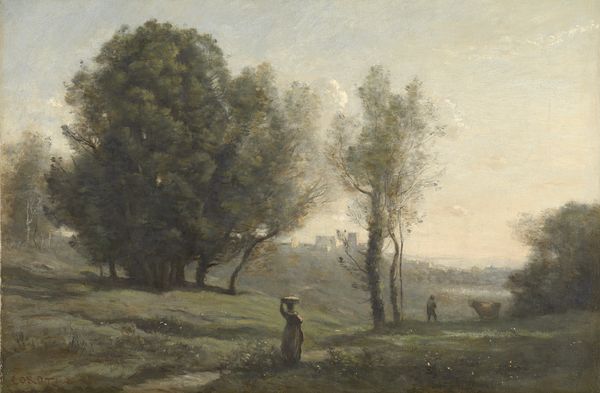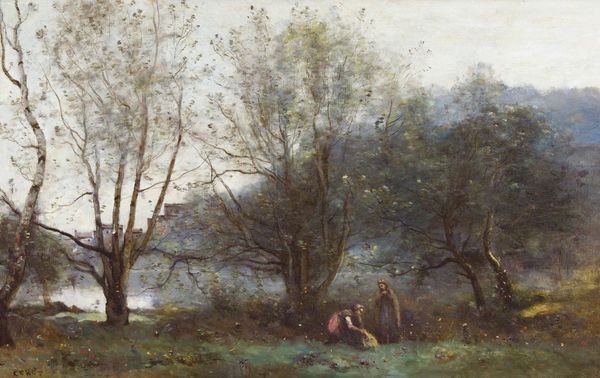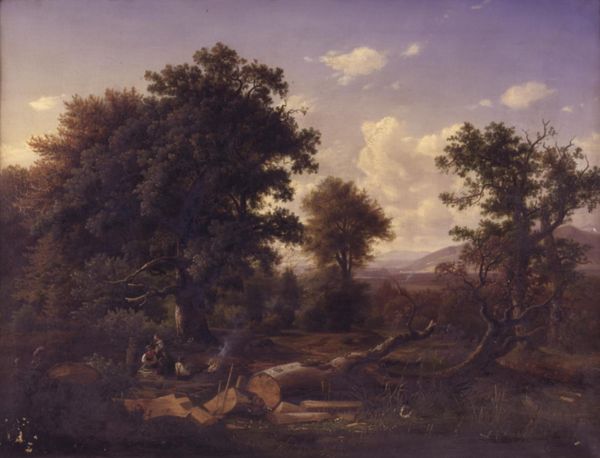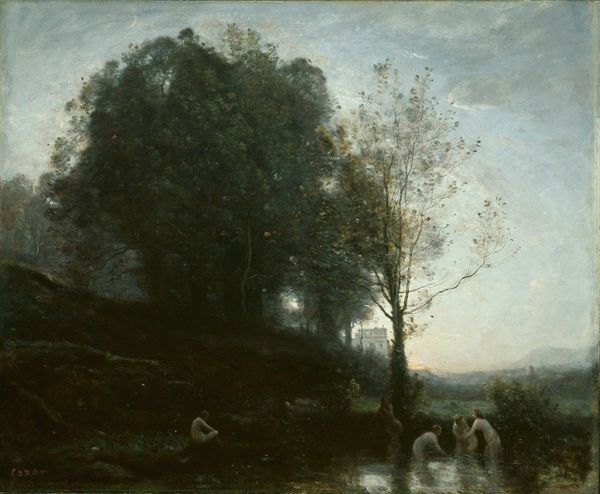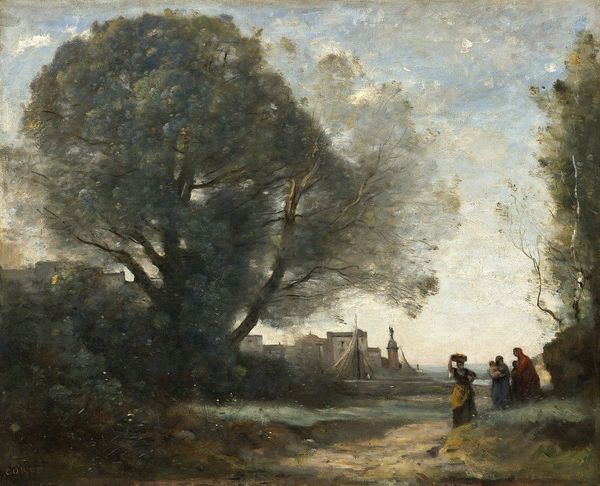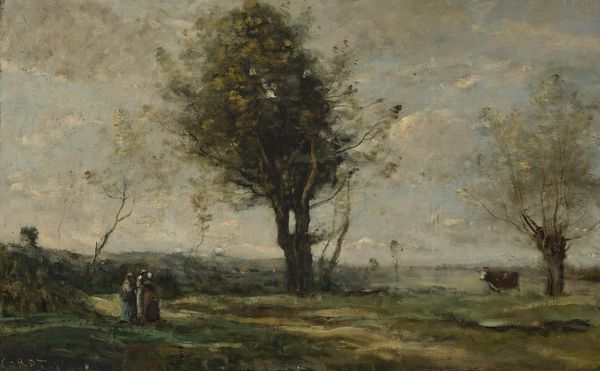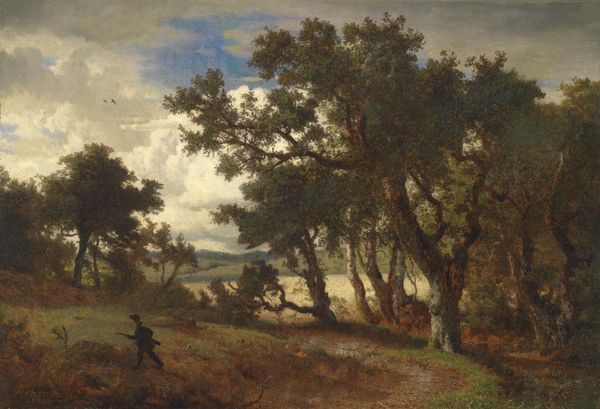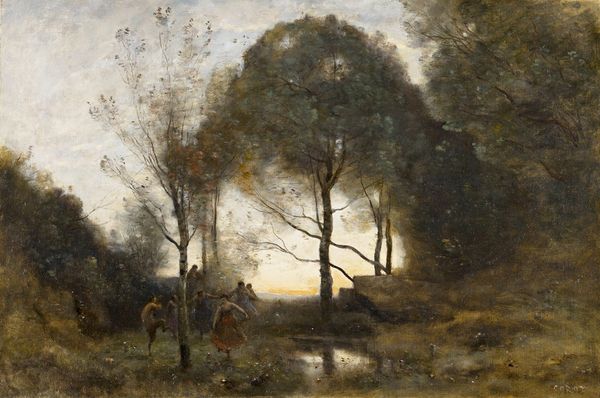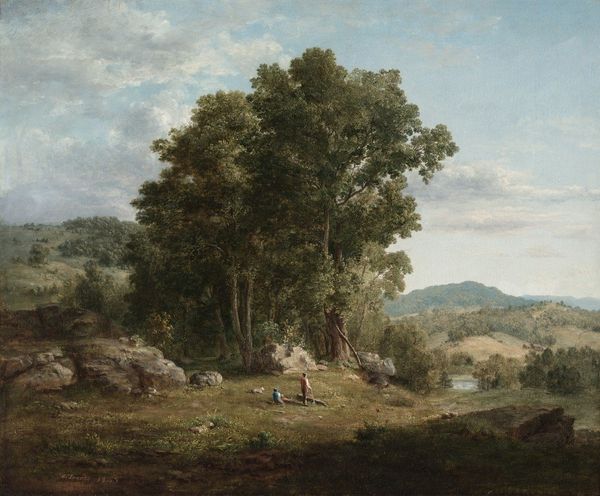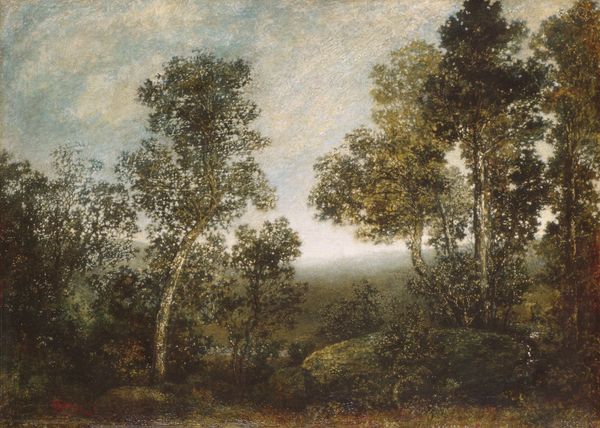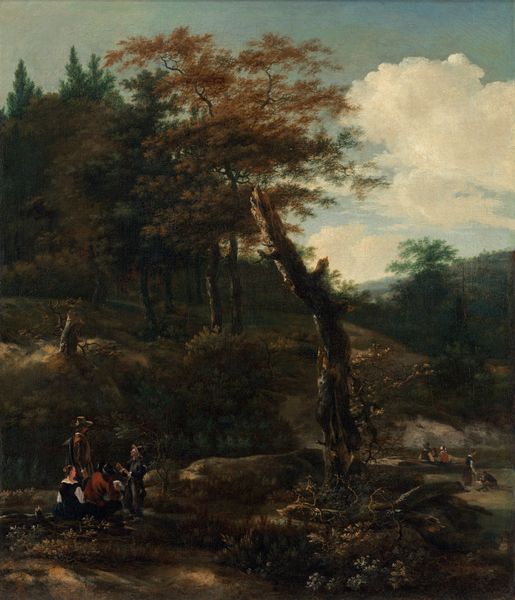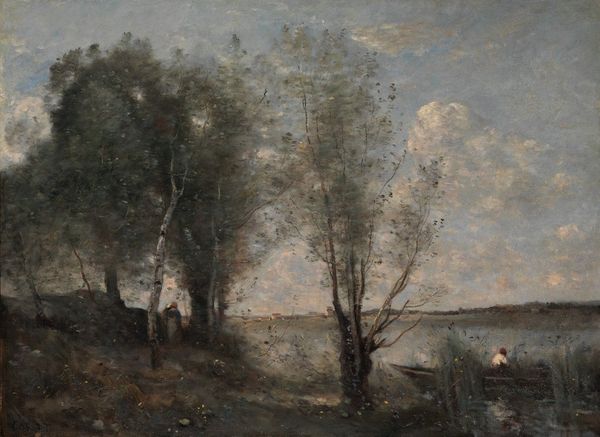
Copyright: Public domain
Curator: Here we have Camille Corot's "Orpheus Lamenting Eurydice," created around 1865. This oil painting, residing at the Kimbell Art Museum, really exemplifies Corot's engagement with mythology. Editor: It has this incredibly soft, dreamy atmosphere, like a memory half-recalled. The palette is muted, but still...lush. I'm really getting a melancholic feeling here. Curator: Definitely a romantic and melancholy feel. It depicts Orpheus, the legendary musician, after he has lost Eurydice for the second time, failing to bring her back from the underworld. Editor: Ah, now that you mention the myth, it clicks! You can almost hear his lyre's mournful tune drifting through the misty landscape. The loose brushstrokes, especially in the trees, add to that ethereal vibe. What do you make of the placement of the figures? Curator: Well, Corot positions Orpheus, not quite central, yet our eyes immediately go there because of his gesture and the way he holds the lyre. And then there are the women who surround him, probably Nymphs who mourned him. It is like a counterpoint, a subtle dance of focus and emotional weight, almost suggesting his inner turmoil and the solidarity around him. It is an incredibly complex representation about loss and what happens in a moment of mourning. Editor: Complex is the word. But even without knowing the mythological background, there’s a story being told here. I guess that's where the real magic lies - in the painting's ability to evoke such feelings, whether you know the narrative or not. It just pulls at the heartstrings, doesn't it? Curator: Absolutely. Corot used the mythological framework to think about modern themes of loss, memory and the human connection with the natural world, connecting those themes through the visual language and brushstrokes of his era. Editor: Well, I will look at this landscape and its figures with a bit more depth and context. I love how knowing some of the art historical framework only heightens my love of the feeling of loss that I get when looking at the landscape. Thanks for adding all that color, curator! Curator: My pleasure. It's about connecting those historical and aesthetic threads to see the bigger, more intricate picture, right?
Comments
No comments
Be the first to comment and join the conversation on the ultimate creative platform.
